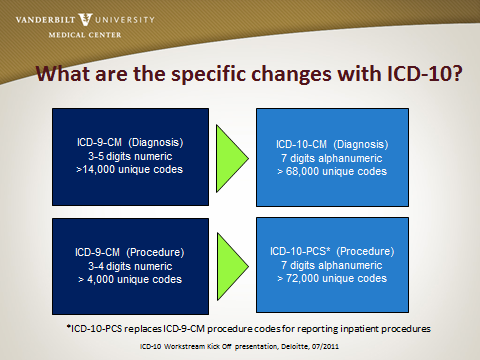What is ICD-102
 Currently, the United States is using ICD-9 (International Classification of Diseases, 9th Revision). This coding system has been in place since 1979.
Currently, the United States is using ICD-9 (International Classification of Diseases, 9th Revision). This coding system has been in place since 1979.
ICD is a coding system of diseases, signs, symptoms, abnormal findings and complaints that is used internationally to classify morbidity and mortality data for tracking.
The ICD coding system is the most widely used diagnostic classification system in health care.
In the United States, the ICD coding system is used for health insurance claim reimbursement.
Providers and staff education enrollment link
Enroll for ICD-10 education at the Learning Exchange
Why Transition to ICD-10?
The United States is the last industrialized country to transition to the ICD-10 coding system.
- Australia transitioned to ICD-10-AM in 1998.
- Canada transitioned to ICD-10-CA in 2001.
What are the Benefits and Value of ICD-10?
Benefits
- Improved specificity and detail in documentation leading to improved quality outcomes
- Increased field size allowing for more codes to accommodate advances in medicine and medical technology and the growing need for quality data.
- Updated knowledge of disease processes, contemporary medical terminology and modern practice of medicine.
- Enables the ability to compare costs and outcomes of different medical technologies.
- More accurate information reported to improve physician profiles.
Values
- Will capture the complexity of patient care leading to improved quality of data and more appropriate reimbursement of healthcare claims.
- More accurate depiction of resource utilization to support reimbursement.
- More accurate information reported to improve physician profiles.
What are the Specific Changes with ICD-10?


